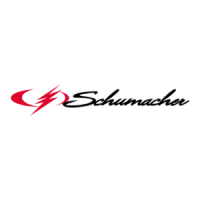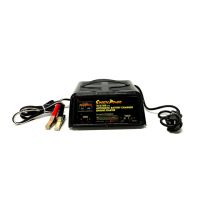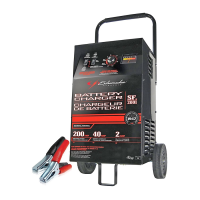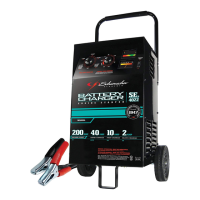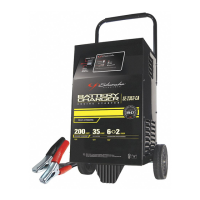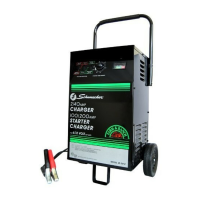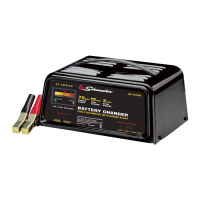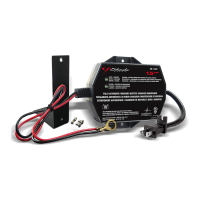1
1. Before you use your battery charger, be sure to read all
instructions and cautions printed on:
• Battery Charger
• Battery
• Vehicle or unit using battery
2. Use battery charger on LEAD ACID type rechargeable
batteries only, such as used in autos, trucks, tractors,
airplanes, vans, RV's, trolling motors, etc. Charger is not
intended to supply power to low-voltage electrical system
other than in an automotive application.
WARNING: Do
not use battery charger for charging dry-
cell batteries that are commonly used with home appliances.
These batteries may burst and cause injury to persons and
damage to property.
3. Use only attachments recommended or sold by
manufacturer. Use of non-recommended attachments may
result in fire, electric shock, or injury.
4. When disconnecting the battery charger, pull by the plug
not by the cord. Pulling on the cord may cause damage to
cord or plug.
5. Locate battery power cord so it cannot be stepped on, tripped
over, or subjected to damage or stress.
6. Do not operate charger with damaged cord or plug. Have
cord replaced immediately.
7. Do not operate charger if it has received a sharp blow, been
dropped, or otherwise damaged in any way. Take it to a
qualified professional for inspection and repair.
8. Do not disassemble charger. Take it to a qualified
professional when service or repair is required. Incorrect
reassembly may result in electric shock or fire.
9. To reduce risk of electric shock, unplug charger from outlet
before attempting any maintenance or cleaning.
10. Do not use an extension cord unless absolutely necessary.
Use of an improper extension cord could result in fire or
electric shock. If an extension cord must be used, make
sure that:
• Pins on plug of extension cord are the same number,
size, and shape as those of plug on charger.
• Extension cord is properly wired and in good electrical
condition.
• Wire size is large enough for AC ampere rating of charger,
as specified below:
Length of cord (feet): 25 50 100 150
AWG size of cord: 16 14 10 8
11. Always charge battery in a well ventilated area.
NEVER operate in a closed-in or restricted area without
adequate ventilation.
WARNING: Risk of explosive gas.
12. Locate charger as far away from battery as DC charger
cables permit.
13. Do not expose charger to rain or snow.
14. NEVER charge a frozen battery. If battery fluid (electrolyte)
is frozen, bring into a warm area to thaw before charging.
15. NEVER allow battery acid to drip on charger when reading
specific gravity or filling battery.
16. NEVER set a battery on top of charger.
17. NEVER place charger directly above battery being charged.
Gases from battery will corrode and damage charger.
18. NEVER touch the battery clips together when the charger
is energized.
00-99-000-371/0803
Read Rules for Safe Operation and Instructions Carefully
Working in vicinity of a lead-acid battery is dangerous. Batteries generate explosive gases during normal
battery operation. For this reason, it is of utmost importance that each time before using your charger, you
read this manual and follow the instructions exactly.
Owner's Manual
–Save–
Important Safety Instructions
WARNING: Handling the cord on this product or cords associated with accessories sold with this product, will expose you to lead, a
chemical known to the State of California to cause cancer and birth defects or other reproductive harm.
Wash hands after handling.
SE-2152MA
Automatic Battery Charger
2 Amp, 12V
15 Amp, 6 & 12V
100 Amp Engine Start, 12V
Battery
Charger
Model:
SCHUMACHER ELECTRIC CORPORATION
801 BUSINESS CENTER DRIVE • MOUNT PROSPECT, ILLINOIS 60056-2179
Send Warranty Product Repairs to: 1025 E. Thompson, Hoopeston, IL 60942-0280
Call Customer Service if you have questions: 1-800-621-5485
A. GENERAL BATTERY SAFETY
